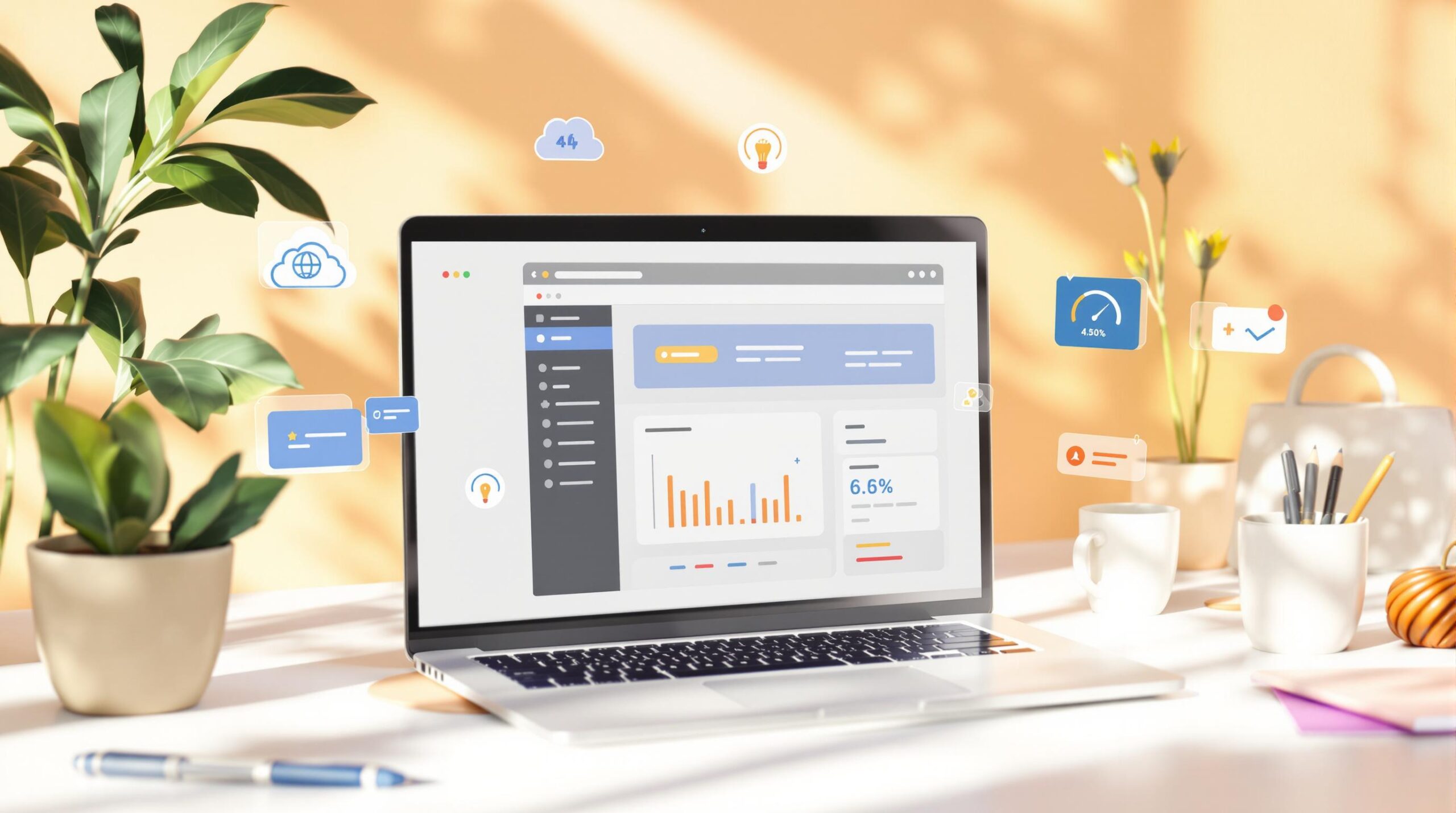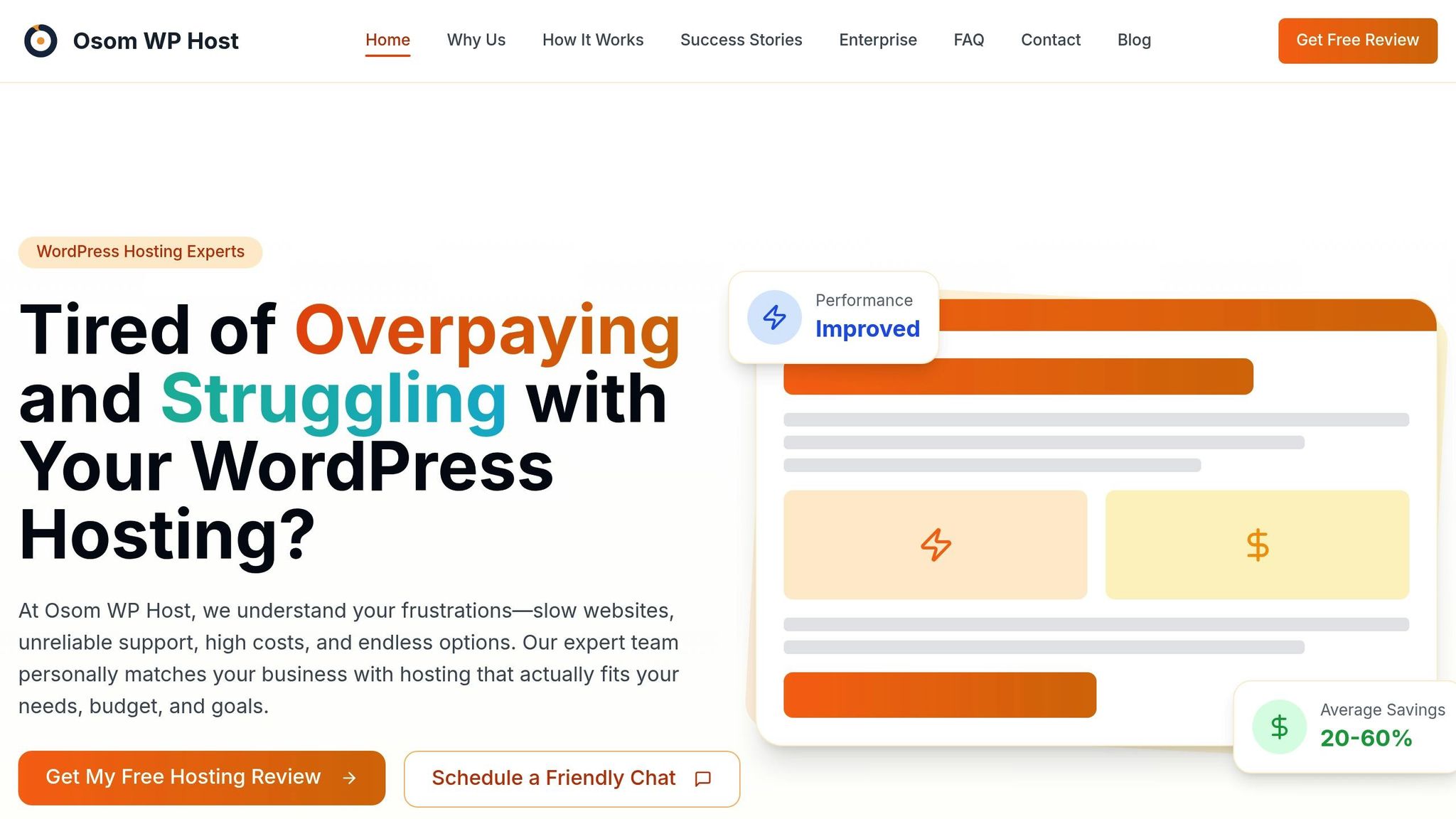Ultimate Guide to WordPress Traffic Spike Preparedness

Worried about your WordPress site crashing during traffic spikes? Here’s how you can keep your site fast, reliable, and ready for sudden surges:
- Choose Scalable Hosting: Ensure your hosting can handle increased demand with features like auto-scaling, load balancing, and 24/7 support.
- Use a CDN: Distribute content globally to reduce server strain and improve loading speeds.
- Set Up Caching: Implement browser, page, and object caching to reduce server load and speed up content delivery.
- Optimize Performance: Remove unused plugins, compress images, minify code, and clean up your database regularly.
- Monitor and Test: Track performance metrics and simulate traffic to identify limits and prepare for spikes.
How to Scale WordPress Site? How to Handle Traffic Spike & …
Choose the Right Hosting Setup
Your hosting needs to handle traffic surges without breaking a sweat. A strong infrastructure is key to managing those sudden spikes.
Check Your Current Hosting Limits
Start by reviewing what your current hosting can handle. Keep an eye on these important metrics:
- CPU Usage: Watch how much of your server’s processing power is being used.
- RAM Consumption: Track memory usage, especially during busy periods.
- Bandwidth: Measure how much data your site transfers each month.
- Database Connections: Know your limit for simultaneous connections.
- Storage Space: Check how much disk space is left.
If you’re consistently using 80% or more of these resources during normal traffic, your setup might struggle when traffic surges.
Pick Hosting That Grows With You
Look for hosting providers that offer features like:
- Auto-scaling: Automatically adjusts resources as demand increases.
- Load balancing: Spreads traffic across multiple servers to avoid overload.
- Dedicated resources: Guarantees specific CPU and RAM allocations.
- Backup systems: Includes automated backups with quick recovery options.
- 24/7 support: Access to experts when you need them most.
Scalable hosting reduces downtime, keeping your site running smoothly and your visitors happy.
Set Up a CDN
A Content Delivery Network (CDN) can make a big difference in handling traffic spikes. CDNs distribute your content across servers worldwide, which eases the strain on your main server. Here’s what a CDN can do for you:
- Speeds up page loading for visitors, no matter where they are.
- Reduces server load during busy times.
- Handles multiple connections more efficiently.
- Offers protection from DDoS attacks.
- Lowers overall bandwidth costs.
When combined with a solid hosting setup, a CDN ensures your site stays fast and reliable, even during peak traffic.
Using Osom WP Host

Finding the right hosting provider doesn’t have to be complicated. Osom WP Host specializes in connecting WordPress sites with hosting solutions tailored to their traffic needs.
Here are some factors to consider when choosing a hosting provider:
| Factor | Why It Matters |
|---|---|
| Scalability | Keeps your site running during traffic surges |
| Support Quality | Ensures expert help when you need it |
| Performance Monitoring | Identifies and prevents potential problems |
| Security Features | Protects your site during high-traffic times |
| Cost Efficiency | Balances performance with your budget |
Set Up Caching
Caching helps reduce server strain by storing frequently accessed content temporarily, ensuring faster delivery during high-traffic periods.
Browser and Page Cache Setup
Browser caching stores static files like images, CSS, and JavaScript directly in visitors’ browsers.
- Set Up Browser Caching
Add the following lines to your .htaccess file to enable browser caching:
<IfModule mod_expires.c>
ExpiresActive On
ExpiresByType image/jpeg "access plus 1 year"
ExpiresByType image/gif "access plus 1 year"
ExpiresByType image/png "access plus 1 year"
ExpiresByType text/css "access plus 1 month"
ExpiresByType text/javascript "access plus 1 month"
</IfModule>
This tells browsers to save these files locally, cutting down on the number of server requests during busy times.
- Enable Page Caching
Page caching generates static HTML versions of your dynamic WordPress pages. This speeds up loading times by reducing the need for repeated server processing.
| Cache Type | Storage Duration | Best For |
|---|---|---|
| Browser Cache | 1 month – 1 year | Static assets (e.g., images, CSS) |
| Page Cache | 1 hour – 1 day | Blog posts, static pages |
| Object Cache | Minutes – hours | Dynamic content |
Advanced Cache Methods
Object Caching stores complex database queries and API call results in memory, which is especially useful for elements like:
- Menus
- Widgets
- Custom query outputs
- API responses
Database Query Caching saves frequently used database query results, reducing repetitive processing. Here’s an example:
$query_results = wp_cache_get('featured_posts');
if ( false === $query_results ) {
$query_results = $wpdb->get_results("SELECT * FROM posts WHERE featured = 1");
wp_cache_set('featured_posts', $query_results, '', 3600);
}
This method serves cached results instead of running the same database queries repeatedly, easing server load during high traffic.
When to Purge Cache:
- After updating content
- When publishing new posts
- Following plugin updates
- During major site changes
sbb-itb-d55364e
Speed Up WordPress
To handle traffic spikes effectively, focus on improving your WordPress performance. This can be done by managing plugins wisely, compressing files, and keeping your database tidy.
Remove Unused Plugins and Themes
Unused plugins and themes can slow down your site by adding extra database queries and unnecessary code. Review your plugins to determine their purpose and usage, then test your site’s speed with and without each one.
| Plugin Type | Impact on Performance | Recommended Action |
|---|---|---|
| Security | High (constant monitoring) | Keep one all-in-one security solution |
| Caching | Medium-High | Use a single primary caching plugin |
| Analytics | Medium | Remove any duplicate tracking code |
| Inactive Themes | Low-Medium | Delete all except the active theme (and one backup, if needed) |
Steps to streamline plugins:
- Identify the purpose and frequency of use for each plugin.
- Test your site’s speed with and without specific plugins.
- Combine features from overlapping plugins into one solution.
Once plugins and themes are optimized, focus on image and code compression to improve load times.
Compress Images and Code
Large images and unoptimized code can significantly slow down your site, especially during traffic surges.
Image Compression Tips:
- Set Proper Image Dimensions: Resize images to the exact display size before uploading. For instance, don’t upload a 2,000px-wide image if it only displays at 800px.
-
Choose the Right Format:
- JPEG: Best for photos or detailed images.
- PNG: Great for images needing transparency.
- WebP: A modern format offering better compression than JPEG or PNG.
-
Use Lazy Loading: Defer the loading of images until they’re needed by adding the
loading="lazy"attribute:<img src="example.jpg" loading="lazy" alt="Description">
Code Optimization: Minify your site’s code by removing unnecessary whitespace, developer comments, unused CSS, and redundant JavaScript. This reduces file sizes and speeds up page load times.
After optimizing images and code, turn your attention to database maintenance.
Clean Up Your Database
An overloaded database slows down queries, making regular maintenance crucial.
| Database Element | What to Clean | Recommended Frequency |
|---|---|---|
| Post Revisions | Keep only 2-3 recent versions | Monthly |
| Spam Comments | Delete all spam | Weekly |
| Transients | Clear expired entries | Daily |
| Tables | Optimize table structure | Quarterly |
To clean up post revisions, run this query in phpMyAdmin after backing up your database:
DELETE FROM wp_posts WHERE post_type = 'revision' AND post_parent IN ( SELECT id FROM ( SELECT id FROM wp_posts WHERE post_type = 'post' ) temp );
Automate Maintenance:
To simplify database upkeep, add these lines to your wp-config.php file:
define('WP_POST_REVISIONS', 5);
define('EMPTY_TRASH_DAYS', 7);
Track and Test Performance
Keep an eye on your WordPress site to catch issues before traffic spikes cause problems.
Add Performance Tracking
Set up monitoring tools to keep tabs on critical metrics like server response time, page load speed, CPU and memory usage, and database performance. This helps you spot potential issues early on.
Test Site Load Limits
Once you’ve got baseline metrics, test how much traffic your site can handle. Use tools like Apache Bench to simulate traffic. For example, run a command like ab -n 1000 -c 50 https://yoursite.com/ to measure:
- Maximum concurrent users before performance dips
- Peak requests your site can handle per second
- How server resources are used under load
- Database connection limits
Make a Traffic Spike Plan
Using your hosting setup and caching strategies, create a plan for handling sudden traffic increases. Include steps like:
- Adding more caching when the site feels strained
- Switching to static content if you’re nearing capacity
- Activating maintenance mode with clear status updates
- Enabling emergency caching settings
- Disabling plugins that use a lot of resources
- Switching to a lightweight theme
- Outlining communication steps for your team and users
Conclusion
Key Takeaways
Getting your WordPress site ready for traffic spikes involves focusing on a few critical areas. A strong hosting setup ensures your site can manage heavier traffic without issues. Smart caching techniques, from browser-based options to advanced methods, help conserve server resources. Managing plugins carefully and compressing code improve your site’s speed. Regular performance monitoring allows you to spot and fix problems before they affect your visitors.
Stay Prepared
The strategies outlined above provide a solid foundation for keeping your site running smoothly. Consistent maintenance is key to handling traffic surges effectively. Plan monthly performance reviews to keep your site optimized. Keep an eye on hosting resources and adjust as needed.
Staying prepared for traffic spikes means revisiting hosting, caching, and optimization methods regularly to ensure your site is always ready for increased demand.
